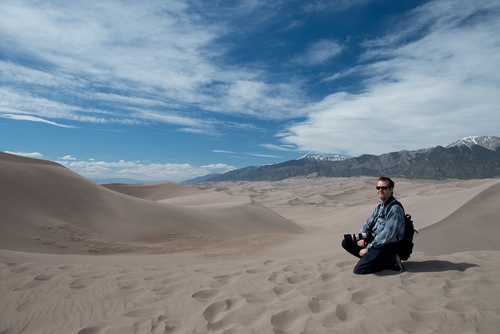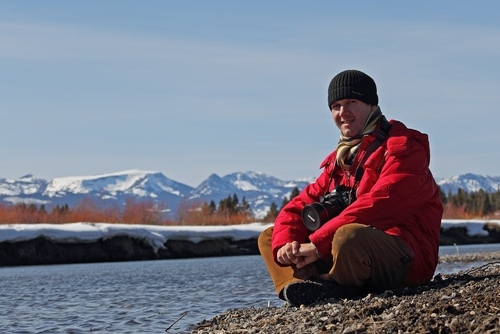Nikolay Makarov
- Year of graduation2003
- PostDirector's Postdoc Fellow, Los Alamos National Lab, USA
Biography
ITMO University graduate, 2003.
Current position: Director's Postdoc Fellow, Los Alamos National Lab, USA
Interview


Why did you decide to study at ITMO?
At the time when Dr. Parfenov was recruiting students into his department, I thought I was very fascinated with computer science and programming, and there was more than enough time to decide which university to apply to. I passed the exams and was accepted to the department before the exams for other schools started, and so I just decided to stay there as it seemed the easiest pathway. The students were successful in the programming championships. The place was widely advertised, though maybe not entirely accurately. Moreover, I had several more classmates going to the same place, so it was another factor to get into ITMO.
What do you remember the most about your time at ITMO?
Good fundamental math classes, too much of history and philosophy, too poor physics classes. Though several professors were really nice, but the way they taught us, or maybe just the order between the math/physics classes (important part of the foreign education – prerequisites for each class) was incorrect. I do not remember any equipment, with the exception of what was at GOI, which we did not use anyway. The approach to exams in my current understanding was incorrect, though they made us quickly learn some new material, but also quickly forget it. Some projects were interesting and exciting, and this is how I got into the science and changed my interests.
Which instructors do you remember the most? Who influenced you the most?
Dr. Tchivilikhin and Dr. Popov were very exciting and interesting to listen to during the physics classes. However, I can say that I did not learn physics during their classes. Only later at the Montana State University I got the physics.
Dr. Podkorytov was a nice professor leading us through the forest of math knowledge, showing a faint tiny path, while other professors were trying to lead us chopping all the trees along the way. The first route was easier and we could go further in the class. The second route was obscured, tough, and we did not move much forward.
What Chair did you graduate from?
Computer Technology Chair, Information Technologies and Programming Department.
What was your first place of employment after ITMO? What did you do there?
After graduation from ITMO I was in graduate school for one year, but then decided to go to the graduate school at Montana State University to get Ph.D. in Physics. So, for another 5.5 years I was a student again, facing a completely different and much more efficient education system. After this I was a postdoc at Georgia Institute of Technology for 2 years, and then – a postdoc at Los Alamos National Lab. Now my contract is coming to the end, and I am actively searching for the next, more permanent job. The job market is, however, extremely tough, and now I see that to be really successful people need to very carefully select each step in their education/career. So, with my current knowledge I would probably try to graduate from a much more famous US university.
Do you keep in touch with your fellow students?
Sometimes, with some of them through email or by phone. I also saw some of them in person when I visited St. Petersburg in 2014.
Did you ever work in your chosen major? If no, what prompted the change?
During the study in ITMO I changed my interests (thanks to Profs. Kozlov and Bespalov), and was much more interested in physics rather than in programming. Moreover, by the end of the university I really wanted to see how things happen in the reality, not just calculate/simulate various physical processes. Therefore I went to US to study Experimental Physics. So, formally, I never worked as a programmer. But I used my skills/knowledge to complement experimental data.
What do you do now?
I’m a postdoc at LANL and I study nonlinear optical properties of various materials, from organic molecules through fluorescent proteins to semiconductor quantum dots. These materials are tailored for specific applications, including nonlinear microscopy, optical telecommunication and solar energy conversion.
Have you received any awards?
In 2012 I was awarded Directors Postdoc Fellowship at Los Alamos National Lab. Other awards include Soros Student, SPIE Scholarship Grant and Russian Federation’s President Grant.
How did your education at ITMO help you in your career? What are its strengths?
I got broad fundamental knowledge of math, which was very helpful since.
What advice can you give graduates to help them reach their potential?
Actually now I think that people should be really focused on the success, so they need to know even before entering the school what they want to do and why, to focus on the career and achieve the maximum. Changing directions/interests/ideas is not that good as it takes time and then limits your career choices. For example, for the majority of the US universities, you can become a professor only if you graduated from one of the top 5-10 US universities, but otherwise they typically do not even look at you.
What are some of the promising areas for students right now?
Entirely depends on what students like. Chemical engineering and optical engineering might be the most attractive in the engineering/science direction. Other directions might be also fine. Just think about what you like and what you want. You can earn ~$150-200K per year after just bachelor degree, or study many more years to get Ph.D. and earn <$100K per year, possibly doing something more interesting.
The difference can be as simple as earning enough to buy a house versus not, to have family versus not, to be constantly under the stress versus not, and to being happy versus not.
